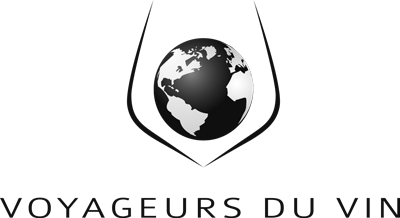Region and Vineyards
Fortuna Terrae comes from the Adrianna Vineyard in Mendoza, Argentina, a site often described as the "Grand Cru of South America." Planted in 1992 in the Gualtallary district of the Uco Valley, this high-altitude vineyard sits around 1,360 metres (4,480 feet) above sea level, where intense mountain sunlight meets markedly cool temperatures. The resulting large diurnal range preserves acidity, builds polyphenols and strengthens tannins, giving wines of remarkable depth, tension and aromatic precision.
Within Adrianna, Fortuna Terrae is a 5-hectare parcel on deep, alluvial loam studded with white stones coated in limestone. The technical sheet and the producer's website both emphasise the wealth of native grasses here, which prevent erosion, attract beneficial insects and foster biodiversity. The vineyard is certified organic, and nearly 40% of the land remains in its natural state. Research by the Catena Institute has made Adrianna one of the most studied vineyards in the world, with dozens of scientific papers on its soils, micro-organisms and ecosystem, all underpinning the wine's striking combination of floral delicacy, mineral energy and refined structure.
Winemaking
Catena Zapata Adrianna Vineyard Fortuna Terrae 2022 is 100% Malbec, harvested by hand from this single high-altitude parcel. The must undergoes an extended cold maceration at below 10 °C, with 60-80% whole clusters, to gently extract colour and aroma while preserving the floral and herbal spectrum typical of the site. Alcoholic fermentation then runs for roughly 10-19 days in small oak vessels, with total maceration around 8-12 days and traditional punch-downs to manage extraction. Wild yeasts are used, and malolactic fermentation is completed.
Élevage takes place for about 14-18 months in French oak, largely older 2,200-litre foudres and 500-litre barrels, emphasising texture and micro-oxygenation over overt oak flavour. Additional bottle ageing before release further polishes the tannins. Analytical figures underscore the wine's balance: around 13.7% alcohol, high total acidity (about 6.8 g/L) and a low pH of 3.55, with minimal residual sugar. Together, this regime yields a Malbec that is concentrated yet remarkably vibrant, combining chalky structure, aromatic lift and a long, detailed finish.
Tasting Notes
- Color: Deep, vibrant purple with inky highlights and a compact, youthful rim, reflecting both the variety and the density of fruit from this cool, high-altitude parcel.
- Aroma: Highly aromatic, showing layers of blueberry, blackberry and plum intertwined with violet, lavender and hints of licorice, cocoa powder, dried herbs and a subtle ink and wet-stone minerality.
- Palate: Medium to full-bodied yet supremely fresh, with compact, juicy dark and blue fruit framed by elevated acidity and finely chalky, almost powdery tannins. The texture is rounded and smooth, but a saline, mineral edge and persistent floral notes carry through an exceptionally long, precise finish.
Did you know?
Adrianna Vineyard is often cited as one of the most studied vineyards in the world. The Catena Institute of Wine has published more than two dozen scientific papers on its micro-organisms, pollinators, birds and native vegetation, and the estate maintains nesting boxes, weather stations and detailed soil maps across the site. Around 39% of the vineyard land remains in virgin condition, making Fortuna Terrae not just a great wine but also a flagship for biodiversity and terroir research in high-altitude viticulture.
Wine Pairing Ideas
- Chargrilled ribeye steak with chimichurri: The wine's spicy black fruit, chalky tannins and lively acidity cut through the richness of marbled beef, while herbal notes echo the freshness of the chimichurri.
- Slow-braised lamb shank with rosemary and thyme: Fortuna Terrae's combination of depth, savoury spice and floral lift complements slow-cooked lamb and aromatic herbs, with its structure standing up to gelatinous textures.
- Wild mushroom and truffle risotto: The wine's mineral edge and violet aromatics resonate beautifully with earthy mushrooms and truffle, while its acidity brings focus and relief to the risotto's creamy richness.
- Aged hard cheeses (Manchego viejo, Parmigiano Reggiano): The concentrated fruit and umami-laden, chalky finish pair superbly with crystalline, nutty cheeses, each bite highlighting the wine's length and savoury complexity.
